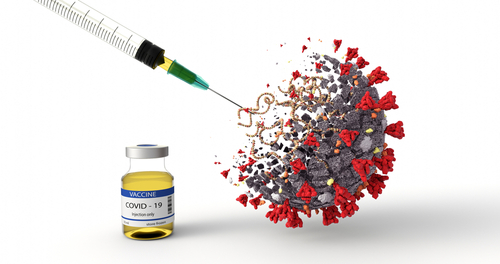Ending the pandemic; preventing the next one
Higher-income countries are leaving the rest of the world behind when it comes to vaccinations. This needs to stop. Instead, COVAX and G20-driven cooperation can help bring the pandemic to a close
I am often asked a simple question: when will the COVID-19 pandemic end?
My answer is equally simple: it will end when the world chooses to end it. It’s in our hands. We have all the tools we need: we can prevent this disease, we can test for it and we can treat it.
Yet, as I write this, many countries continue to face steep increases in cases and deaths – even some countries with the most access to the tools that save lives.
How can this be? Increased social mixing and mobility and the inconsistent use of public health and social measures, plus more transmissible variants and inequitable access to vaccines, all drive transmission.
By September, more than 5.5 billion vaccines had been administered worldwide, but almost 80% of those had been in high and upper middle-income countries.
The World Health Organization’s global targets are to support every country to vaccinate at least 40% of its population by the end of this year and to have 70% of the world’s population vaccinated by the middle of next year.
Although 70% of high-income countries have reached the 40% target, no low-income country has. That’s not because they lack the capacity; almost all low-income countries are rolling out the small amounts of vaccines they have been able to obtain, and many have extensive experience with large vaccination campaigns for polio, measles, meningitis, yellow fever and more.
We can still reach our targets, but only with the commitment and support of G20 members. As the largest producers, consumers and donors of COVID-19 vaccines, they hold the key to achieving vaccine equity and ending the pandemic.
Accordingly, I call on G20 members to support achieving WHO’s global vaccination targets, by swapping near-term vaccine deliveries with COVAX, by fulfilling their dose-sharing pledges urgently, and by facilitating the sharing of technology, know-how and intellectual property to support regional vaccine manufacturing.
Even as we work to end this pandemic, we must learn the lessons it is teaching us.
There have been several reviews of the global response to the pandemic, including the recent report of the G20 High-Level Panel on Financing the Global Commons for Pandemic Preparedness and Response.
As we have studied these reports, we see four critical areas for action.
First, we need better global governance. The existing global health security architecture is complex and fragmented, and voluntary mechanisms have not led to the level of commitment and action required.
That’s why I believe a treaty or other international instruments on pandemic preparedness and response will provide a much-needed overarching framework for global cooperation, set the rules of the game and enhance solidarity among countries. WHO’s members will discuss the initiative at a special session of the World Health Assembly in November.
Second, we need more and better financing for national and global preparedness and response.
That includes substantially increasing domestic investment as well as international financing to support low and lower middle-income countries. A mechanism financed from voluntary development assistance will only increase competition for already scarce resources.
Crucially, any financing facilities must be built using existing financial institutions rather than creating new ones that further fragment the global health architecture.
Third, we need better systems and tools, across the One Health spectrum.
Already, WHO has taken steps to start building some of those tools. In September, I was honoured to join Chancellor Angela Merkel to open the WHO Hub for Pandemic and Epidemic Intelligence in Berlin, designed to foster greater sharing of data and information among countries and improve global surveillance for epidemics and pandemics.
Other initiatives are in development, including the WHO BioHub, a new facility in Switzerland for storing and sharing pathogens, and the Universal Health and Preparedness Review, a new peer-review mechanism for enhancing national preparedness modelled on the Universal Periodic Review used by the United Nations Human Rights Council.
And fourth, we need a strengthened, empowered and sustainably financed WHO at the centre of the global health architecture.
With 194 members and 152 country offices, WHO has a unique global mandate, unique global reach and unique global legitimacy.
We must seize the moment. In the coming months and years, other crises will demand our attention and distract us from the urgency of taking action now. If the world continues down the same path, it will continue to get the same result, which is a world that is less healthy, less safe and less fair.
Now is the time for new ideas, and for working together in solidarity to build a future that is healthier, safer and fairer for everyone, everywhere.












